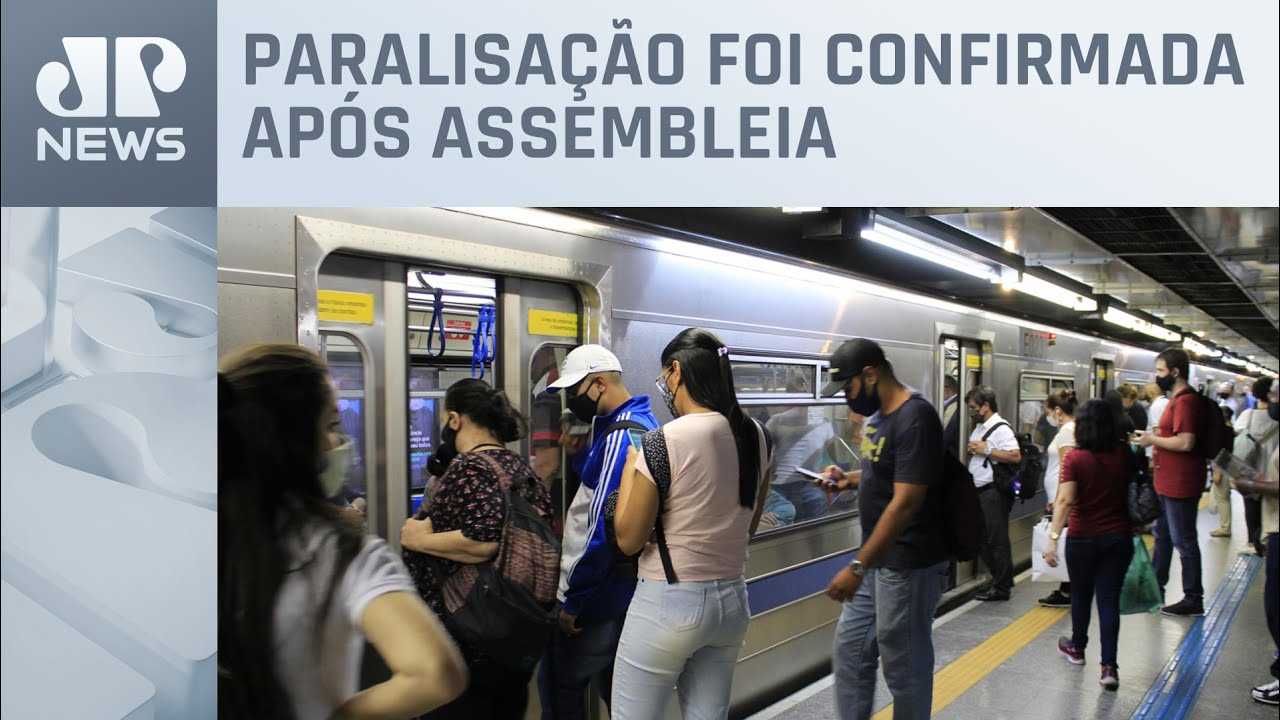Sindicato Confirma Greve No Metrô De São Paulo Nesta Quinta-Feira (23)
Unleash Your Creative Genius with MuseMind: Your AI-Powered Content Creation Copilot. Try now! 🚀
Introduction
The bustling city of São Paulo is no stranger to the chaos of everyday life. On Thursday morning, its residents woke up to a challenging start as the metro workers announced an indefinite strike. Beatriz Manfredo, the roaming reporter, brings us all the details live from the scene.
The Unusual Morning at the Ana Rosa Station
At around 6:07 am, Manfredo reports from the Ana Rosa station, where she witnesses an extraordinary scene. Unlike the usual hustle and bustle, the station is closed with a sign that reads "Partial Shutdown due to the Metro Workers' Strike." Metro workers are demanding fair compensation, an end to outsourcing, and the opening of public job competitions. The striking workers have offered a compromise: open the gates, and they will return to work.
The Impact on Metro Lines and Bus Stations
The strike affects several metro lines, including the Blue, Green, Red, and Silver lines. Amidst the chaos, the city's bus terminals are also feeling the strain as commuters scramble for alternative transportation. People who were unaware of the strike find themselves stranded at the metro entrances, hastily trying to figure out their next move.
The Privatized Lines and the City's Response
Interestingly, the privately-operated Yellow and Lilac lines continue to function as normal. This raises questions about the ongoing national debate surrounding privatization. Meanwhile, the city government has announced the suspension of the vehicle rotation policy and the activation of the PAESE bus system to assist stranded passengers. Yet, as always, the strike is causing significant disruptions for the people of Sao Paulo.
Interview with the Metro Workers' Union
Manfredo seizes the opportunity to speak with Narciso, the vice-president of the Metro Workers' Union, who explains their demands and frustrations. They have been requesting negotiations with the government for the past two months but have received no response. The issues at hand include a lack of new hires, unjust dismissals, and the need for better services for the population. Narciso expresses their disappointment in the government's refusal to engage in productive discussions and emphasizes their desire to serve the public through free entry to the metro.
The City's Struggle and Alternatives
As the strike continues, the people of São Paulo face the same hardships they have experienced during previous strikes. With roads congested and rideshare prices surging, the option of driving becomes less appealing. The situation at bus terminals in Itaquera and Jabaquara, which are typically busy during the morning rush hour, is particularly overwhelming. However, as Manfredo reports, the Ana Rosa terminal remains relatively calm for the time being.
Updates and the Government's Response
Throughout the day, the city government, CPTM (São Paulo's metropolitan train system), and the metro system continue to update the public. The CPTM assures passengers that all its lines are operating normally and that only transfer connections to the halted metro lines are suspended. The government also confirms that, if needed, they may extend peak hours for train services to accommodate the increased demand. In a gesture of goodwill, the city government suspends the vehicle rotation policy, affording some relief to motorists.
Conclusion
As the chaos ensues, the people of São Paulo must adapt to the challenges brought on by the strike. It is a difficult day for commuters, but the hope for a resolution remains high. The microphones of Jovem Pan are open, waiting for a response from government officials and representatives from the metro system. Until then, the people of São Paulo must navigate their way through the chaos and patiently await the outcome of the ongoing negotiations.
